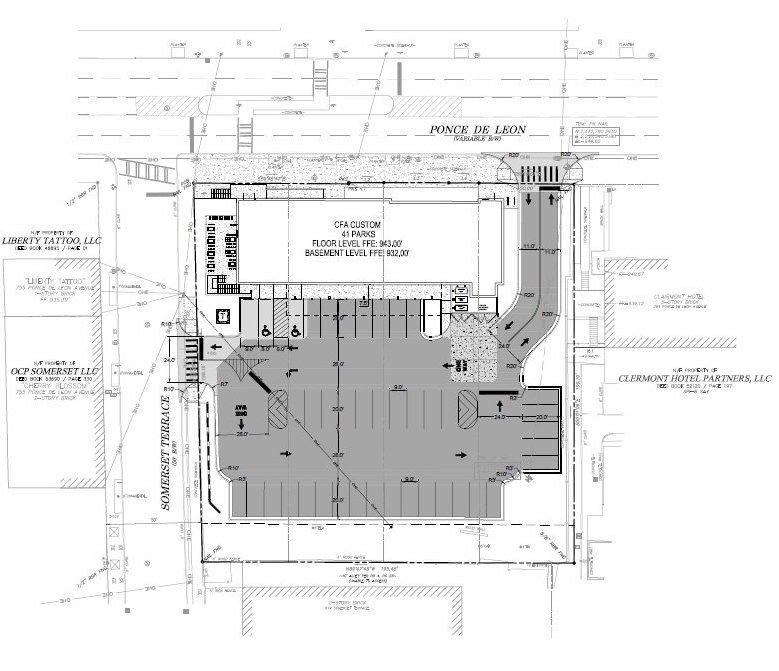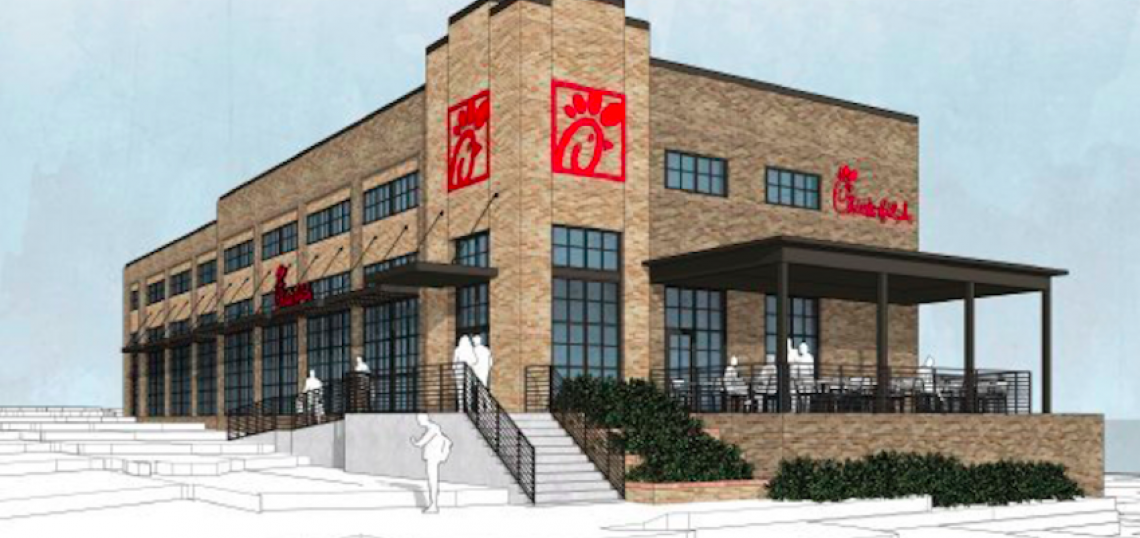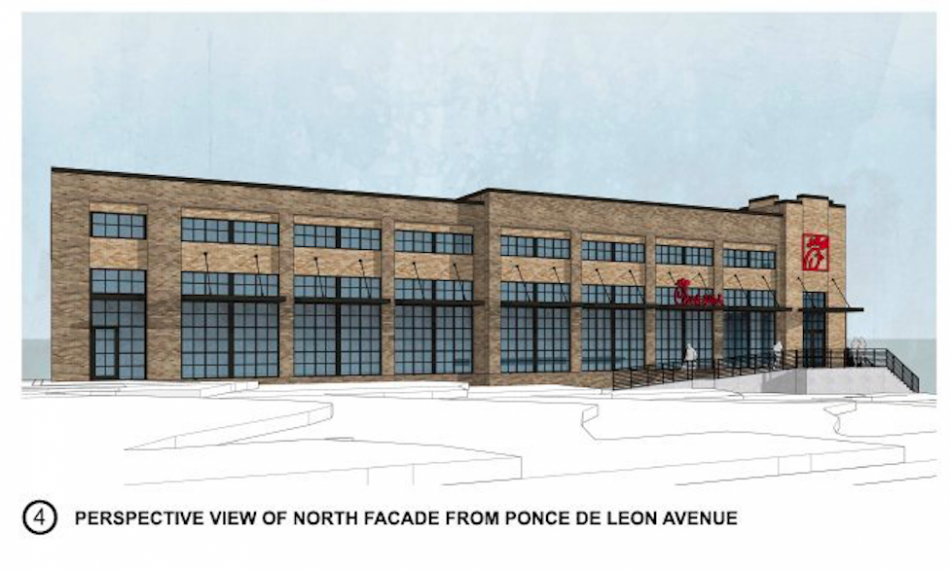It appears that an Atlanta neighborhood’s stringent new development guidelines will force one of America’s largest fast-food chains to get more creative with designs for a planned restaurant in a potentially lucrative location.
As reported on these pages last week, homegrown chicken-sandwich empire Chick-fil-A has ambitions to build two new restaurants within just four blocks of each other on Ponce de Leon Avenue—a busy, densifying intown street where the franchise has tried to establish a presence for at least five years.
But building in Poncey-Highland, where the easternmost Chick-fil-A would be located, isn’t as easy-breezy as it used to be.
A year ago, the tony eastside neighborhood created the Poncey-Highland Historic District as means of safeguarding about 260 irreplaceable buildings and establishing guidelines for new development that inevitably would come.
According to Lianne Deren, a member of the district’s subcommittee and the Poncey-Highland Neighborhood Association land-use chair, Chick-fil-A’s plans run afoul of the new rules in several ways.
 The former Dugan's franchise location in question, next to the Hotel Clermont and its famous strip club dive. Google Maps
The former Dugan's franchise location in question, next to the Hotel Clermont and its famous strip club dive. Google Maps
Back in 2016, real estate listings indicated Chick-fil-A was zeroing in on a Ponce site next to Hotel Clermont that’s been home to Dugan’s Bar and Restaurant since the early 1980s. At the time, Dugan’s management denied a deal was imminent, and the speculation eventually fizzled.
According to Deren, Chick-fil-A filed paperwork for a certificate of appropriateness at Dugan’s’ 777 Ponce de Leon Avenue address, a necessary step before building permits can be issued, in late September.
After those filings, Chick-fil-A reached out to Poncey-Highland and the broader planning district, NPU-N, to discuss plans that called for demolishing Dugan’s and building anew, said Deren.
Earlier this month, Chick-fil-A reps met with Poncey-Highland neighborhood leaders and the city’s Historic Preservation Studio staff, who informed the restaurant group that plans for the Ponce store violate local regulations “in fairly significant ways,” as Deren puts it.
The new historic district, for starters, allows for only a “commercial block” to be built in the area in question. That means a building at least two stories tall with pedestrian-oriented retail or service on the ground floor, and topped by either office, residential, or hospitality uses.
Chick-fil-A’s single-tenant building type—a “shopfront”—is no longer permitted, according to Deren. Ditto for the 41 proposed parking spaces on the site, which would exceed the max of 2.5 spaces per 1,000 square feet of floor space.
Also, said Deren, Chick-fil-A’s plans for a sidewalk and amenity zone weren't up to snuff for what’s required in PHHD regulations that aim to enhance the pedestrian experience along Ponce.
 Chick-fil-A's plans call for 41 parking spaces where Somerset Terrace meets Ponce de Leon Avenue. Chick-fil-A/Bowman
Chick-fil-A's plans call for 41 parking spaces where Somerset Terrace meets Ponce de Leon Avenue. Chick-fil-A/Bowman
As another required step in a historic district, Chick-fil-A reps had been scheduled to bring plans before the Atlanta Urban Design Commission today. They’ve since deferred to a future hearing date that hasn’t been set, according to Deren.
How the restaurant plans to move forward isn’t yet known.
Inquiries with Chick-fil-A media reps this week and last regarding the project’s status have not been returned. Questions emailed to Dugan’s have also not been answered.
In a broader sense, as Deren noted in an email to Urbanize Atlanta, the regulations for Poncey-Highland’s new historic district were written to preserve neighborhood character and also allow for growth—but only that which boosts livability.
“[Development must] bring a better pedestrian experience along this stretch of Ponce,” said Deren, “and more density along this major transportation corridor within half a mile of the BeltLine.”
• Images: Are Chick-fil-A's plans for Old Fourth Ward really so terrible? (Urbanize Atlanta)








